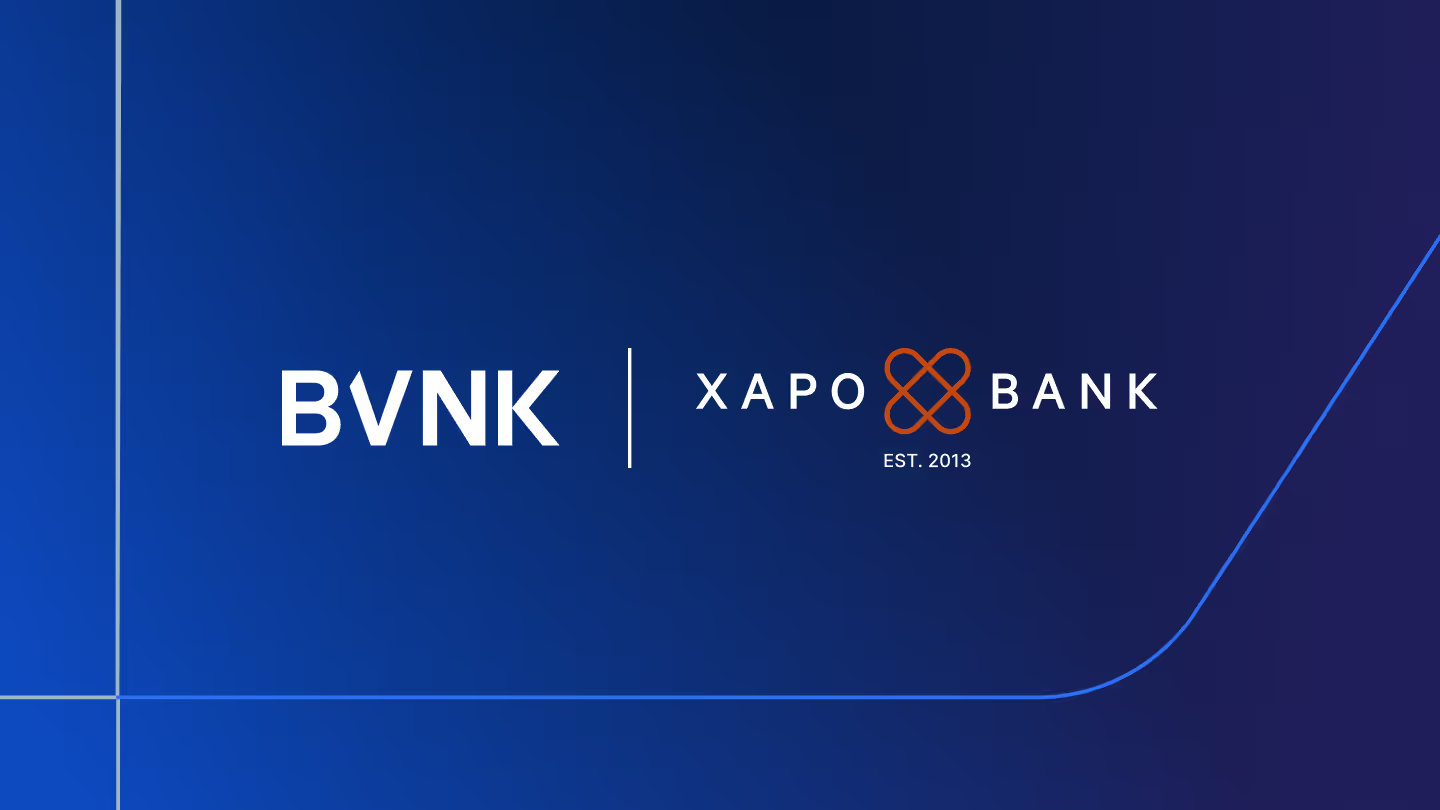Global treasury management: a comprehensive guide
Unlock the keys to successful global treasury management in 2024 with this comprehensive guide

Introduction
Global treasury management is a complex and multifaceted function, which requires a deeper understanding of international finance and a more comprehensive approach to risk management than purely domestic businesses. Success in global treasury management means adapting to a dynamic and diverse macro financial environment while ensuring the company's financial stability and growth.
In this guide we’ll look at the key challenges facing global treasury teams, and suggest tips for optimising their financial risk and management strategies.
What does global treasury management involve?
Global treasury management, also known as corporate treasury management or treasury services, refers to the strategic financial management and control of a company's cash, liquidity, and financial assets on a global scale. It's a crucial function within the finance department of multinational corporations and large organisations. The primary objectives of global treasury management include optimising cash flow, managing financial risks, and ensuring that the company has the necessary funds to meet its operational and strategic needs.
Treasury management is a complex function, and more so for large companies with offices and operations across the world. Let’s take a look at some of the key aspects of treasury management that global businesses must manage effectively.
Aspects of treasury management
Cash management
Monitoring and managing the company's cash positions, optimising cash balances, and ensuring that funds are available when needed.
Liquidity management
Ensuring the company has access to adequate liquidity to cover short-term and long-term financial obligations, while minimising idle cash.
Risk management
Identifying and managing financial risks, such as currency exchange rate risk, interest rate risk, and credit risk, to protect the company's financial stability.
Credit management
A subset of risk management is credit management, also known as credit risk management. Credit management is the process of assessing, controlling, and monitoring the creditworthiness of customers or borrowers to minimise the risk of default on loans or the non-payment of invoices and to ensure the efficient management of a company's credit resources.
Capital structure and funding
Determining the most cost-effective mix of debt and equity financing to support the company's growth and investment strategies.
Investment management
Managing surplus cash by investing it in low-risk, highly liquid assets that generate competitive returns while maintaining access to funds.
Working capital management
Optimising the company's working capital, including accounts receivable and accounts payable, to improve cash flow efficiency.
Banking relations
Establishing and maintaining relationships with banks and financial institutions to access banking services and financial products.
Compliance and regulatory reporting
Ensuring compliance with financial regulations and reporting requirements, in various jurisdictions where the company operates. These include tax, payment standards (eg the Payment Card Industry Data Security Standard -PCI DSS), capital adequacy and liquidity requirements (eg Basel III), currency exchange controls, and financial reporting and disclosure regulations (eg International Financial Reporting Standards - IFRS - and Generally Accepted Accounting Principles - GAAP).
Key differences between domestic and global treasury management
The approach to treasury management can differ significantly when comparing companies with a domestic footprint versus those with global operations. When treasury management extends its reach to multiple countries and regions, it introduces complexities such as dealing with cross-border settlements, managing different currencies, and navigating diverse regulatory environments. Being able to manage these complexities should be a key consideration wherever a business is looking to expand its international footprint. Let’s take a look at these differences in more detail.
Currency risk
- Domestic treasury management: Currency risk is generally limited to fluctuations in the domestic currency. It is relatively straightforward to manage, with fewer variables to consider.
- Global treasury management: Managing currency risk becomes a central concern. Fluctuations in multiple foreign currencies can significantly impact financial stability. Techniques like hedging and exposure management are crucial in global treasury to mitigate these risks.
Regulatory compliance
- Domestic treasury management: Compliance is primarily focused on the regulations within a single country. The regulatory framework is typically well-understood and relatively stable.
- Global treasury management: Compliance becomes complex due to varying regulations across different countries. Staying abreast of international financial laws and adapting to changes in multiple jurisdictions is a substantial challenge.
Banking relations
- Domestic treasury management: Domestic treasury often maintains relationships with a limited number of local banks or financial institutions.
- Global treasury management: Global treasury must establish and maintain relationships with a broader network of international banks - either directly or typically via a third-party - to facilitate cross-border transactions and access a variety of financial products and services.
Cash flow and liquidity
- Domestic treasury management: Domestic operations typically have more predictable cash flows and liquidity requirements.
- Global treasury management: Global operations may experience fluctuations in cash flow due to differing payment cycles and currency impacts, necessitating more sophisticated cash management strategies.
Diversified investments
- Domestic treasury management: Investments are often localised and rely on domestic financial markets and instruments.
- Global treasury management: Global treasury may diversify investments across multiple countries and asset classes to optimise returns while also needing to manage the risks associated with foreign investments.
6 major challenges of treasury management globally
Global treasury management is inherently more challenging than for domestic operations, and becomes more so for every new country you expand to. Here are some of the key challenges that global treasury management teams face.
Currency fluctuations
Global businesses are exposed to fluctuations in multiple foreign currencies. These exchange rate variations can impact the value of assets, liabilities, and cash flows. Managing these currency risks requires sophisticated hedging strategies and constant monitoring.
Diverse banking and payment systems
Different countries have distinct banking systems, payment processing times, and regulatory requirements. This diversity can lead to delays and costs (often hidden) in fund transfers and reconciliation of payments, which in turn impacts liquidity. Working with these different frameworks and systems may also require integrations of new financial software.
International tax regulations
Managing tax efficiently and legally is a significant challenge for global treasury teams, because of the varying rules of different jurisdictions. Rules on transfer pricing, repatriating profits, paying shareholder dividends, VAT and GST, and permanent establishment (PE) status all have implications. Global treasuries must continuously seek opportunities to optimise tax structures and money flows while minimising liabilities in a legally compliant manner. This often demands extensive resources, and the right balance of costs and returns.
Time zone differences
Operating in multiple time zones can create challenges in terms of managing daily cash flow operations. While one region may be conducting transactions, another may be closed, leading to delays in payment processing and funding.
Varying economic conditions
Different regions may experience economic downturns or geopolitical events at different times. These uncertainties can have a profound impact on macro-economic indicators such as inflation and currency prices, and the availability and cost of credit. It can also affect the ability of customers to pay on time. A global treasury management must have contingency plans in place to adapt to these economic disparities and headwinds.
Supply chain and inventory management
For global businesses, supply chains and inventory management is more intricate. Differences in lead times, shipping costs, and payment terms with international suppliers and distributors can affect liquidity and working capital management. Global treasury teams must be well versed in prefunding strategies, such as supply chain financing or trade finance, and cash management practices such as cash pooling (also known as cash concentration).
6 tips for optimising your global treasury management strategy
With the right strategy and tools, global treasury managers can streamline their processes, minimise risks, and establish cost-efficient and fast flows of money. Let’s talk about some of the key ways to achieve this.
Centralise, standardise and automate
Start by centralising your treasury operations. This not only delivers a single view of all the company’s financial operations and status, but also allows for decisions to have the benefit of global context. Identify existing workflows, policies, and key stakeholders across different business units, and decide what can be consolidated. Implement a common ‘Treasury Management System’ (TMS) to centralise and automate treasury operations, and define data standards that deliver consistency in reporting and analysis.
Achieve a single view of cash flow
A key benefit of standardisation is to achieve a single view of global cash flow. This is essential to manage liquidity effectively, both at a global and local level. Forecasting and reporting performed globally, and in real-time, highlights areas of cash excess and shortage, a key insight to ensure that capital is located where it can be most effective.
Work with hedging instruments
Hedging involves the use of various financial instruments to protect against the uncertainty of currency exchange rate fluctuations. There are different types of hedging instruments, such as forwards, options, swaps and collars. Choosing the right hedging instrument requires careful consideration of various factors, notably cost, complexity, and how they are treated for accounting purposes. (We look at the topic of hedging in more detail in our new guide to managing forex risk.)
Use stablecoins for fast cross-border settlements
One innovative way to address currency fluctuations and slow settlement times is by leveraging stablecoins. Stablecoins are designed to maintain a stable value by being pegged to a reserve asset like the US dollar. They also operate outside of traditional banking networks, and so operate 24/7, and are a faster and often less costly method for currency conversion. You can read more about stablecoins in our guide for businesses paying international vendors and suppliers.
Diversify banking relationships
Diversifying your banking relationships around the world is important to ensure you can leverage the most efficient payment channels. More banks in your treasury ecosystem can mitigate the cost and time of having to process international settlements through intermediary banks. It also expands credit options, and spreads the risk of banking failures.
Keep an eye on your markets
Global geopolitical events, economic risks, and regulatory changes can have significant implications for financial performance and meeting legal obligations. Global treasury teams need to ensure vigilant and proactive monitoring of all their markets. Media outlets and market research companies can provide a high-level view, but dedicated professionals with knowledge of specific markets are also required to dig into the detail and explain their potential consequences.
How blockchains are shaping the future of global treasury management
Blockchain technology is emerging as a transformative force in global treasury management, offering efficiency, transparency, and security. Blockchains enable near-instantaneous settlement of transactions. This means that global treasury teams can streamline cross-border payments, manage global liquidity more easily and pay suppliers and partners around the world quickly.
The decentralised nature of blockchain also reduces the need for intermediaries, leading to cost savings. Also, the immutability of a blockchain ledger ensures transparency and traceability of transactions, helping global treasury teams with reconciliation and fraud management.
At the forefront of this financial revolution are stablecoins, which provide all the benefits of blockchain-enabled payments, while mitigating the risk of cryptocurrency price volatility. These benefits can be accessed by treasury teams without the need to hold stablecoins on their balance sheet. Fintechs, such as BVNK, leverage stablecoins as an intermediary currency in cross-border fiat transactions, enabling up to x5 faster settlements than traditional banking rails.
The growing popularity and trust in stablecoins also offers treasury teams an alternative way to support business expansion, especially in countries with high levels of financial exclusion from traditional banking.
FAQs
What are the two main areas of treasury management?
The two main areas of global treasury management are cash and liquidity management, and risk management.
What is the difference between finance and treasury management?
Finance encompasses a broader range of activities related to the financial health of an organisation, including budgeting, financial planning, accounting, and financial reporting. Treasury management, on the other hand, is a subset of finance that focuses predominantly on optimising cash and liquidity, and managing financial risks.
What are the instruments of treasury management?
The instruments of treasury management include cash and liquidity management software, risk management tools such as hedging strategies, investment vehicles, and payment and collection systems. These can be provided as standalone solutions, or accessed with a single platform, known as a ‘Treasury Management System’. With the emergence of stablecoins as an alternative method for international settlements, blockchains are also becoming a key part of the treasury technology stack. Most treasury management teams will access stablecoins and their underlying blockchains by working with fintech providers, such as BVNK.
What should be considered in choosing a treasury system?
When choosing a treasury system, consider factors such as scalability, user-friendliness, integration capabilities with existing systems, support for regulatory compliance, security features, and the ability to automate treasury operations. Also evaluate the vendor’s track record for security and innovation, their operating licences, and the size and quality of their regulation and compliance teams.
What are the different treasury metrics?
Common treasury metrics include cash flow forecasting accuracy, working capital ratios, liquidity ratios, and risk-related metrics such as ‘Value at Risk’ (VaR) and interest rate risk measures.
Wrapping up
Treasury is increasingly seen as a strategic partner within an organisation. Treasurers are playing a more prominent role in advising on capital allocation, financial risk management, and optimising financial strategies to support business goals. At the same time, geopolitical events, regulatory policies and societal challenges, such as the fallout from Covid-19 - are adding complexity, but also presenting new strategies and tactics for global treasury teams to consider. These include blockchains, and specifically stablecoins, and new prefunding and supply chain financing solutions.
Forward-thinking global treasury teams should collaborate with fintech partners to harness innovations in treasury management, particularly technology and stablecoins. Fintechs provide the agility and expertise to integrate these advancements seamlessly into existing treasury operations, enabling treasury teams to quickly and cost-efficiently benefit from more streamlined processes, enhanced cash flow visibility, and faster and low-cost cross-border settlements. Fintech partners with a strong regulatory focus can also help treasury teams in navigating evolving global regulations, ensuring compliance in a dynamic regulatory landscape and safeguarding financial operations from unexpected disruptions.
.png)
Blockchain in cross-border payments: complete guide
Latest news
View allGet payment insights straight to your inbox



.jpg)






.avif)


.jpg)





